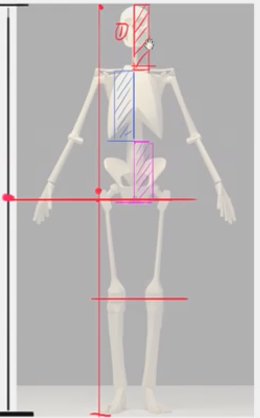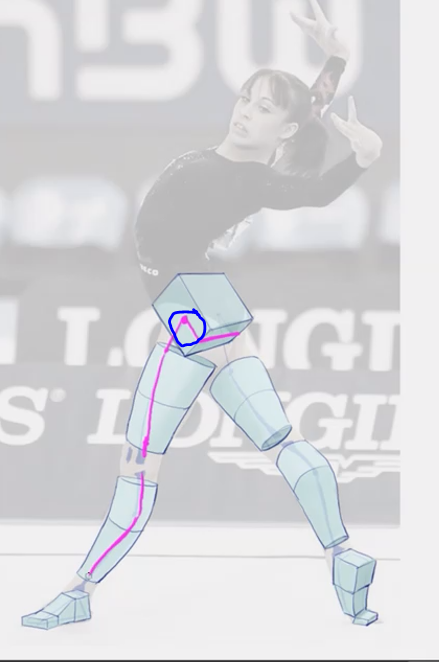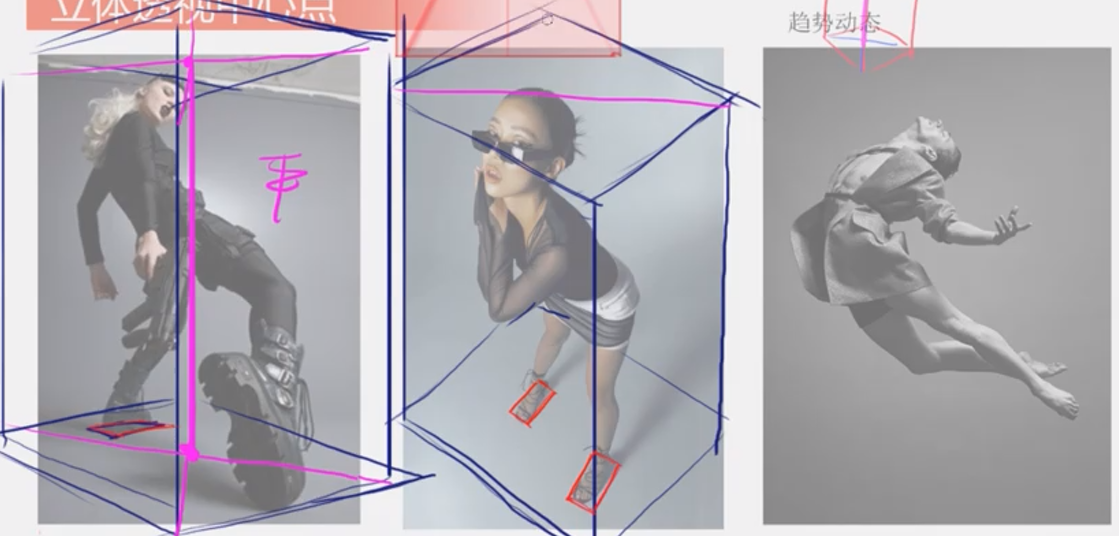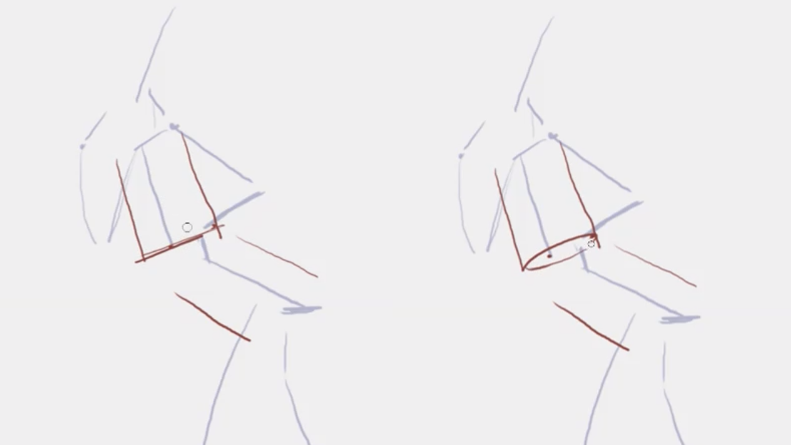Summary
- Everything that isn’t airborne needs BALANCE
- Create and annotate a wireframe
- Proportion and perspective considerations (Encase using a distorted cube face)
Committing to the full figure in one step uses too much of your working memory and detracts from the individual components and proportions.
- A process of refinement is preferred.
The Body has many 1 to 1 relations.
- Bottom of the pelvis divides the body in two. (Most important)
- Lower and Upper leg are divided in halves
- The upper body is divided into thirds.
- The arms are halves, each share the length of the chest

How to Wireframe
- Divide the body in two (Find the end of pelvis)
- Divide the upper half into thirds
- Use thirds to determine approximate ribcage, pelvis, and neck positions.
- Proportions should remain consistent with similar components if sharing same perspective.
- Use the ribcage to determine arm length.
- You may copy over lines that you consider having similar proportions.
Examples
The top length can be copied over for the bottom knowing they share the same perspective. However, the arms to the right are affected by perspective, and don’t share the ribcage length one-to-one.
Wireframing the leg
From the bottom of the pelvis, the sides show a line parallel that extends 1/3 of it.
- Not visible when full-front or side-view.
Upper Indent

This is especially helpful to depict where the leg segments start on certain views.
Each leg segment also has its own indent at their 1/3 mark. This is more obvious side or front view.
Center of Gravity
First, a rectangle bounds the width of the figure. The “center” is placed between the feet of the figure.
- If there is only one foot on the ground, that is the center.
Counterexample
The feet is the “center”, but it does not divide the figure evenly. The foot on the ground should tilt inwards
A pose that feels empty on one side can add an additional object to be “centered”
The inverse is true, the image is off balance because of the ears added. The solution would be to pull the legs further inward.
Finding center in perspective
Analyze the perspective of the foot, and encompass it inside a square to extend upwards.

- Three is excluded from center of gravity. No balance needed if the person is airborne.
Perspective Overlap
The upper 3 segments feature some overlap in angled views.
Expanding an ellipse into a cylinder
Find the longest horizontal line in the ellipse. Then expend perpendicular vertically.
Demonstration
C does not meet this constraint. The two lines are not 90 degrees
Annotating the wireframe with cylinders
- Start with two parallel lines.
- Create the ellipse, with consideration that the connecting bottom line is the widest part of the ellipse…
